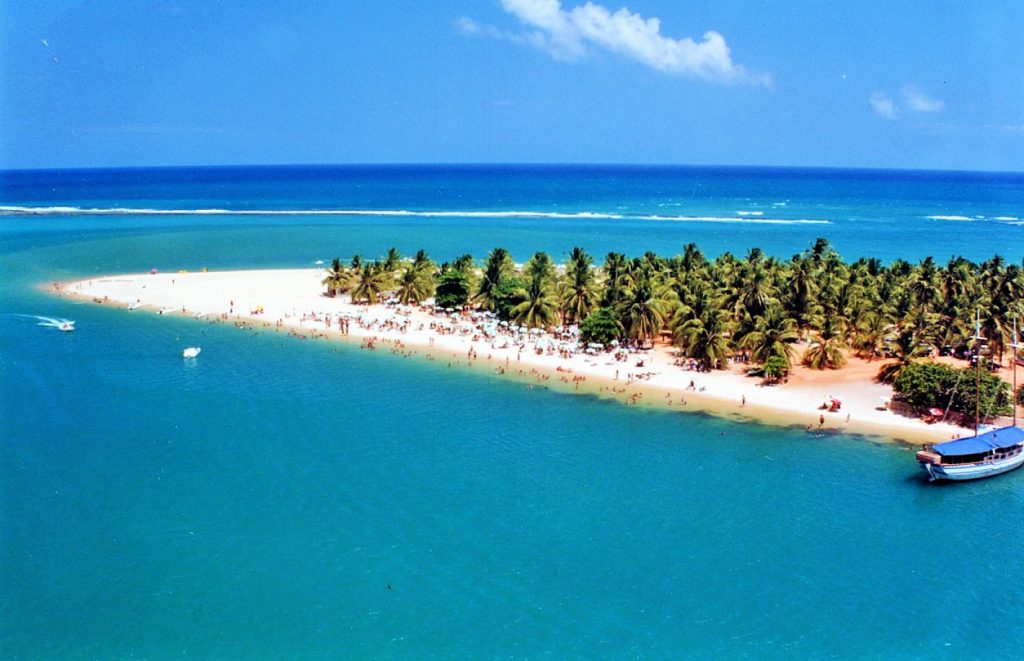Este post também está disponível em:
Português
English
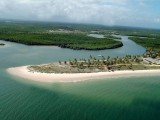
The south coast of Sergipe offers beautiful beaches with white sand dunes, lagoons and coconut trees and among the most visited are Caueira, Abaís and Saco.
At Saco beach, after crossing the Piquitinga and Real rivers, you reach the famous Mangue Seco.
This region is known as Costa das Dunas and was the first place visited by the Jesuits in the colonization of the State.
The year of their arrival, 1575, is remembered in a landmark on the banks of the Real River.
Beaches on the south coast of Sergipe have transparent waters and tranquility and it is possible to dive into the warm water of the most famous beaches in the state. Fishermen’s villages offer peace and typical dishes to visitors.
Leaving Aracaju, it is 60 kilometers to the destination, on the south coast of Sergipe. The beaches and villages have in common the ideal tranquility for those who just want to relax and enjoy nature.
Terra Caída is a fishing community, where you can bathe in the river at any time of the day, even at high tide.
A few kilometers away is Pontal, another village with coconut trees by the sea, which is a kind of maritime terminal.
Videos about the South Coast of Sergipe
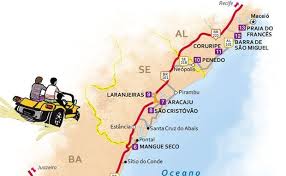
On the schedule of tourists arriving at the site is a ride on a schooner boat. It takes about 40 minutes to discover the natural beauty of this part of Sergipe.
Along the way of the waters, the extensive mangroves preserved on both banks of the Piauí River draw attention.
When the tide is low it is possible to walk in the mangroves and see up close the home of many crustaceans. In the middle of the intertwined roots lives the aratu, an animal that is very successful in the restaurants of the region.
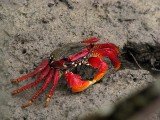
The aratu is the crab’s cousin. Suspicious and difficult to catch, it has a valued meat, with a milder flavor. It is used to make a catado, which is one of the delights of local cuisine.
Back on the road, 8 kilometers away is Praia do Saco, a cove of fine sand, with calm sea, where the water temperature reaches close to 30 ° C most of the year.
With daily rates from R$ 180, the couple can stay by the sea, in inns with apartments and chalets. The beach also has golden dunes that can be visited by buggy. The rental for four people costs R$ 80.
Paying an extra R$ 50, it is very worthwhile to extend the tour to Ponta do Saco, a paradisiacal beach, without waves and still little explored.
The water at Ponta do Saco is transparent and warm, irresistible. It is one of those places that makes you want to stay a little longer. There is also a floating bar to eat and drink between dives.
Aratú crab or red aratu
Aratú crab (Goniopsis cruentata, Latreille, 1803) is a medium-sized crab species with a dark carapace and red coloration on the legs with small white spots, belonging to the genus Goniopsis.
It inhabits the Western Atlantic, which includes Bermuda, Florida, Gulf of Mexico, Antilles, Guianas and Brazil (in the Fernando de Noronha archipelago, and from Pará to Santa Catarina), in a continuous distribution pattern. It feeds on decomposing animals, fruits and mangrove plants.
In Brazil, it also receives the names aratu, aratu-do-mangue (in the Northeast Region of Brazil) and maria-mulata (in the Southeast Region of Brazil).
Praia do Saco on the South Coast of Sergipe
.
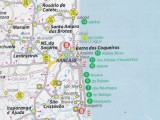
Saco Beach in Sergipe is an option for those seeking tranquility in Sergipe
Praia do Saco is divided in two and, during the week in low season, both are almost deserted. On weekends or holidays, the first part of the beach, located on the left, has more movement due to the infrastructure offered to tourists.
Rustic kiosks of local residents serve typical dishes and portions for visitors with an average price of R$ 20.
For those seeking more peace, the second part of the beach is more recommended. With only one kiosk, it is the most deserted side. In addition to the beautiful natural landscapes, we have among the few, but luxurious, houses by the sea, a chapel built in 1938, which is closed.
According to a local resident, the bishop of the city of Estância removed the saints for fear that the sea would advance on the chapel. The place housed the images of Nossa Senhora da Boa Viagem and Jesus de Boa Viagem, patron saints of the village.
On the horizon, you can see Mangue Seco, the last beach in the north of the state of Bahia. The beauties of this beach were shown in 1989 in the soap opera “Tieta”, an adaptation of the novel “Tieta do Agreste”, by the Bahian writer Jorge Amado.
From Praia do Saco it is possible to go by speedboat to Mangue Seco. The tour makes its first stop at Ilha da Sogra, a sandbank about one km long, visible only at low tide. In addition to the beautiful look of the place, on one side it is bathed by the Real River and on the other, by the sea. The boat also passes by the beautiful tip of Ilha do Saco.
Nothing better than a walk through the dunes to end the day. The buggy ride lasts an average of 40 minutes and covers all the dunes of the region.
On the beach there are options of inns and several summer houses. If you choose to sleep in the region, there is no nightlife option in the surroundings. For those staying in Aracaju, several travel agencies make the trip for about R$ 60 per person.
The trip from the capital of Sergipe to the southern coast of the state is worth it for the beautiful scenery along the way, such as the passage over the new Joel Silveira bridge, over the Vaza-Barris River and the hundreds of coconut trees along the road.
Lagoa dos Tambaquis on the South Coast of Sergipe
10 km from Praia do Saco, also in the municipality of Estância, is located the 20 km long Praia de Abaís. Unlike its neighboring beach, the waters are already rough, which makes it coveted by surfers and kitesurfers.
The main attraction of Praia de Abaís is Lagoa Grande, also known as Lagoa dos Tambaquis and Lagoa Cristal. Nine kilometers long, it is the largest natural lagoon in Sergipe.
Located inside a campsite, it is possible to visit the lagoon and swim among the tambaquis, which weigh up to 20 kg.
Visitors can also feed them, giving them in the mouth the feed purchased on site. In addition to these huge fish, about ten other species can be found in the lagoon.
How to get to the South Coast of Sergipe
Leaving Aracaju, the tip is to take the highway/SE-285, on the Linha Verde sergipana.
Leaving the beach of Atalaia, the coastline of the highway is an invitation to observe the sea. The highway has bars and restaurants and on weekends they are well frequented by tourists and sergipanos.
The signage will guide you to a junction on the right that will give access to the village Mosqueiro.
It is there where there is a region at the mouth of the Vaza-Barris River where tourism is professionalized with catamaran trips through the islands of Namorados, Croa do Goré, among other nooks and river beaches.
We will head towards the Joel Silveira bridge, in the municipality of Itaporanga d’Ajuda. We will continue until we pass the beaches of Caueira (Itaporanga) until we reach the beach of Abais (Estância). Go further to the village Porto do Cavalo until you follow a small bridge.
The first village to be explored is just after the Gilberto Amado bridge, in bucolic Terra Caída, on the right bank of the highway. Terra Caída, a small town in Sergipe, located on the banks of the Cajazeiras and Piauí rivers and belonging to the municipality of Indiaroba, is one of the places where nature has acted in an exceptional way.
The rusticity enchants those who like bucolic landscapes, framed by the coastal fauna and flora.
Access is easy and as soon as the tourist enters the village, one realizes that time seems to walk slowly in the locality. Be sure to try the pies from the Frutos do Mar bar and restaurant on the village pier.
From there you can take a walk that crosses beaches and sandbanks suitable for bathing.
And there you can also take boat trips to the touristy Mangue Seco and Ilha da Sogra, but remember: you will only be passing through to enjoy another locality that fills the most poetic eyes with beauty.
About 10 km away, with access on the left by the Highway/SE-285, 8 km from the junction is Pontal, another village of unparalleled beauty in Sergipe that was certainly visited by Jorge Amado.
On the banks of the River Real, Pontal is opposite the dunes of Mangue Seco.
Tourism has not yet arrived there as it should and the locality serves as a base for the crossing, even so, it is still a place to be observed, such beauty of the river-sea scenery. Pontal is not left aside and has a beauty that must be clicked and appreciated (see tips).
From there, boats leave for Mangue Seco every half hour.
Disembark in the village, because Ilha da Sogra awaits you.
The story goes that the island got its name because an adventurer came to it and, because his mother-in-law was very bossy and annoying, he allowed the boat to leave her forever in paradise.
Tourist boats depart from Mangue Seco for those who want to enjoy moments of leisure and tranquility on Ilha da Sogra. The wind blows slowly on the sand always changing the natural pools of direction.
Currently, Ilha da Sogra is one of the most visited destinations on the south coast of the state, configuring a place to be explored along with Saco beach or Mangue Seco.
But here the tip is to go through Pontal and Terra Caída, destinations few mentioned by travel agencies, but which has a unique beauty.
Because of the tranquility, it can be said that Tieta certainly also bathed in the greenish and warm waters of Ilha da Sogra. The question whether she was there or not will remain unknown to those who visit.
What is certain is that the island is a little piece of paradise in Sergipe and attracts more and more eyes.
Sergipe Tourism and Travel Guide

